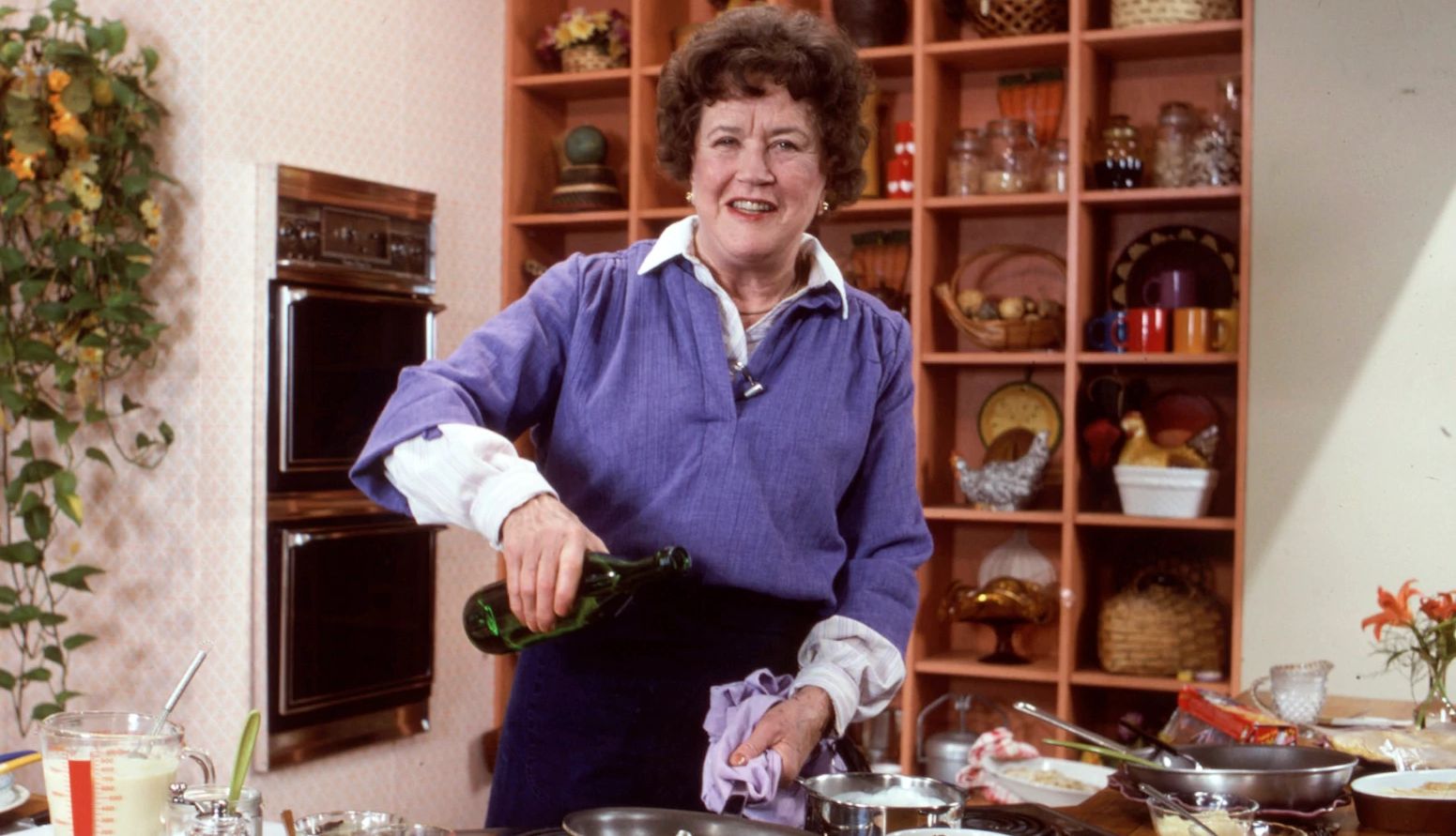
- Select a language for the TTS:
- UK English Female
- UK English Male
- US English Female
- US English Male
- Australian Female
- Australian Male
- Language selected: (auto detect) - EN
Play all audios:
The improbably named recipe for Chicken Melon describes a “boned and stuffed chicken formed, in its own skin, into a pâté the shape of a melon,” covering five pages with step-by-step
instructions and several how-to photos. It lists 20 ingredients, including “a big speck of nutmeg” and requires a trussing needle — or “a mattress or sail-makers needle.” I was a
20-something aspiring cook with basic skills, determined to master this complex recipe from the 1978 _Julia Child & Company_ cookbook by dinnertime. Heartened by Child’s brave approach
to culinary challenges, I sharpened my knives and set to work. I remember sweating from exertion trying to debone that chicken without piercing the skin, having to sit back and think hard
before moving to the next step, and spending the better part of a day on that project. Hours later, in a kitchen perfumed with deliciousness, my “melon” emerged from the oven. It was
magnificent. SETTING THE BAR When Child first appeared on the culinary scene in the 1960s, many of us were trapped in a bleak foodscape of canned and frozen convenience food. In our home
kitchens, we dined on the faux international cuisine of Italian food by Chef Boyardee, Asian dishes by Chun King, unidentifiably sourced frozen fish sticks and the ultimate multicourse treat
of Swanson frozen TV dinners. Fine-dining restaurants featured slabs of medium rare prime rib au jus, foil-wrapped baked potatoes and wedges of pale iceberg lettuce slathered in pink-tinged
Russian dressing. Then Child showed us how to lovingly cook authentic French food from scratch when she debuted her groundbreaking and career-making first book, _Mastering the Art of
French Cooking, Volume One_, published by Knopf in 1961. It would be overstating to claim that Child put me on the path to becoming a chef, a professional chef instructor and eventually a
restaurant owner, but she certainly, as befits her stature, had an outsize influence, starting with Chicken Melon. Julia Child demonstrates how to stuff sausages on her cooking show, “The
French Chef, ” in 1971. Bettmann Archive/Getty Images From the late 1970s through 2005, I gained plenty of cooking experience. I was a chef at numerous Philadelphia establishments during a
restaurant renaissance, ran a prestigious catering business, taught cooking to aspiring chefs at the Restaurant School in Philly and cofounded Everyday Gourmet cooking school for home cooks
in Newtown Square. In 2005, I served as CEO of White Dog Cafe, a nationally revered pioneer of the farm-to-table movement, and by 2006, I owned and was operating Summerhouse Grill, a
boutique seasonal restaurant serving locally produced food in Montrose, Pennsylvania. Along the way I’ve also been a recipe tester for cookbooks by renowned chefs Marc Vetri and Masaharu
Morimoto. Although I never had the pleasure of meeting Child, my role model, who died in 2004, I was delighted to discover that some of my chef and nonchef friends had encountered her. In
recounting their experiences — with the exception of recalling two cherished recipes (coq au vin and a lemony bean soup) — each cited her character. My friends recalled Child’s courage,
generosity and persistence; how she came into her own in her 50s, bringing a lifetime of experience, some of which was failure; how she combined deep knowledge with boundless enthusiasm and
showed us what it is to be a pioneer, empowering women and changing minds — always with humor and respect for everyone she encountered, from VIPs to worker bees. As more than one person
laughingly observed, she taught us it’s OK to drop some food on the floor and serve it anyway. TIMELESS LESSONS This August 15, as we remember Child’s birthday, it’s worth revisiting some of
the timeless lessons she offered to her millions of fans — not just insights about food but advice that is equally applicable to a life well-lived. Throughout her television series and her
many cookbooks, she dispensed good sense that still rings true today. Here’s a taste of how Child’s culinary wisdom expands to practical observations for everyday living, taken from the
delightful foreword of _Mastering the Art of French Cooking_.





